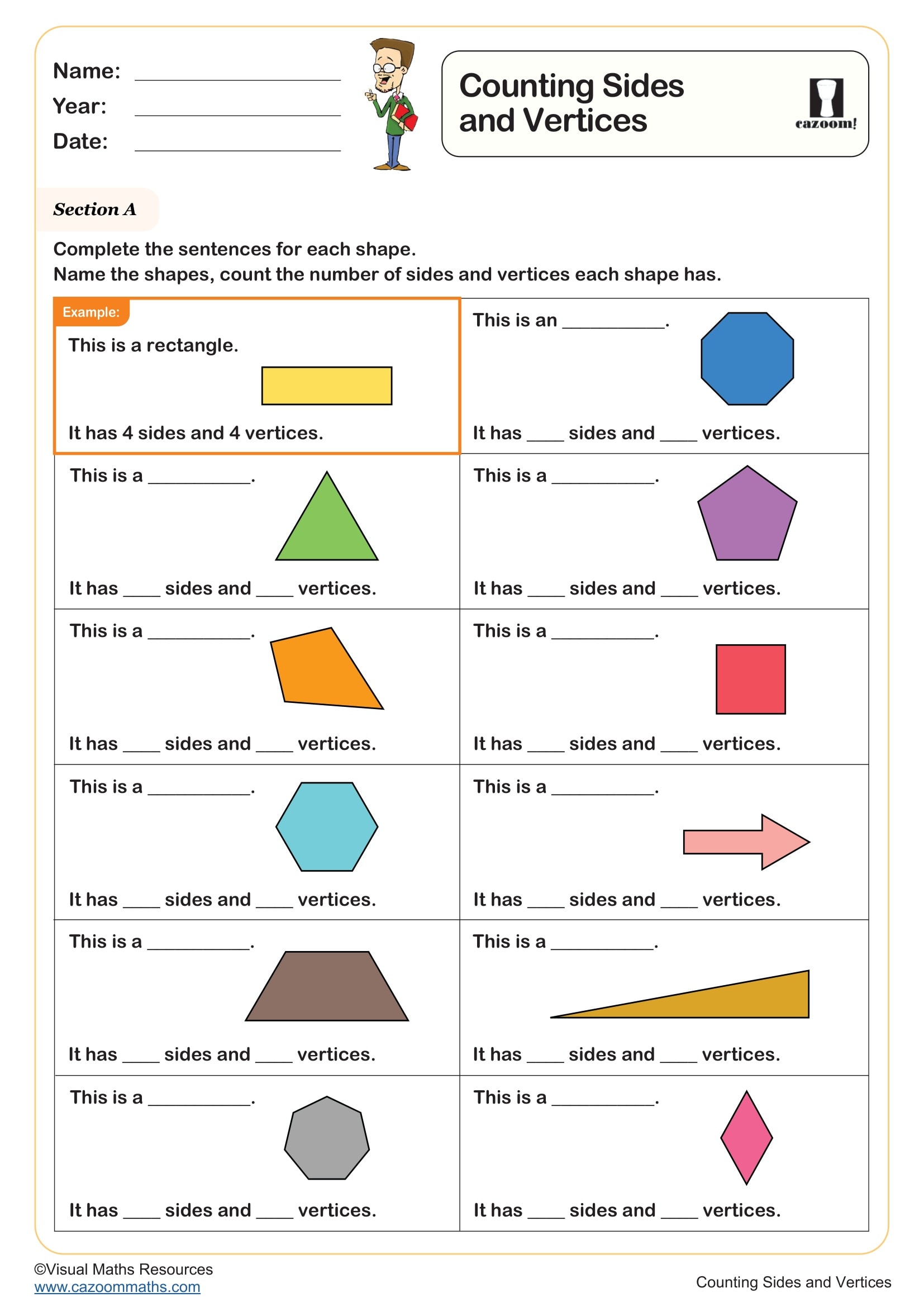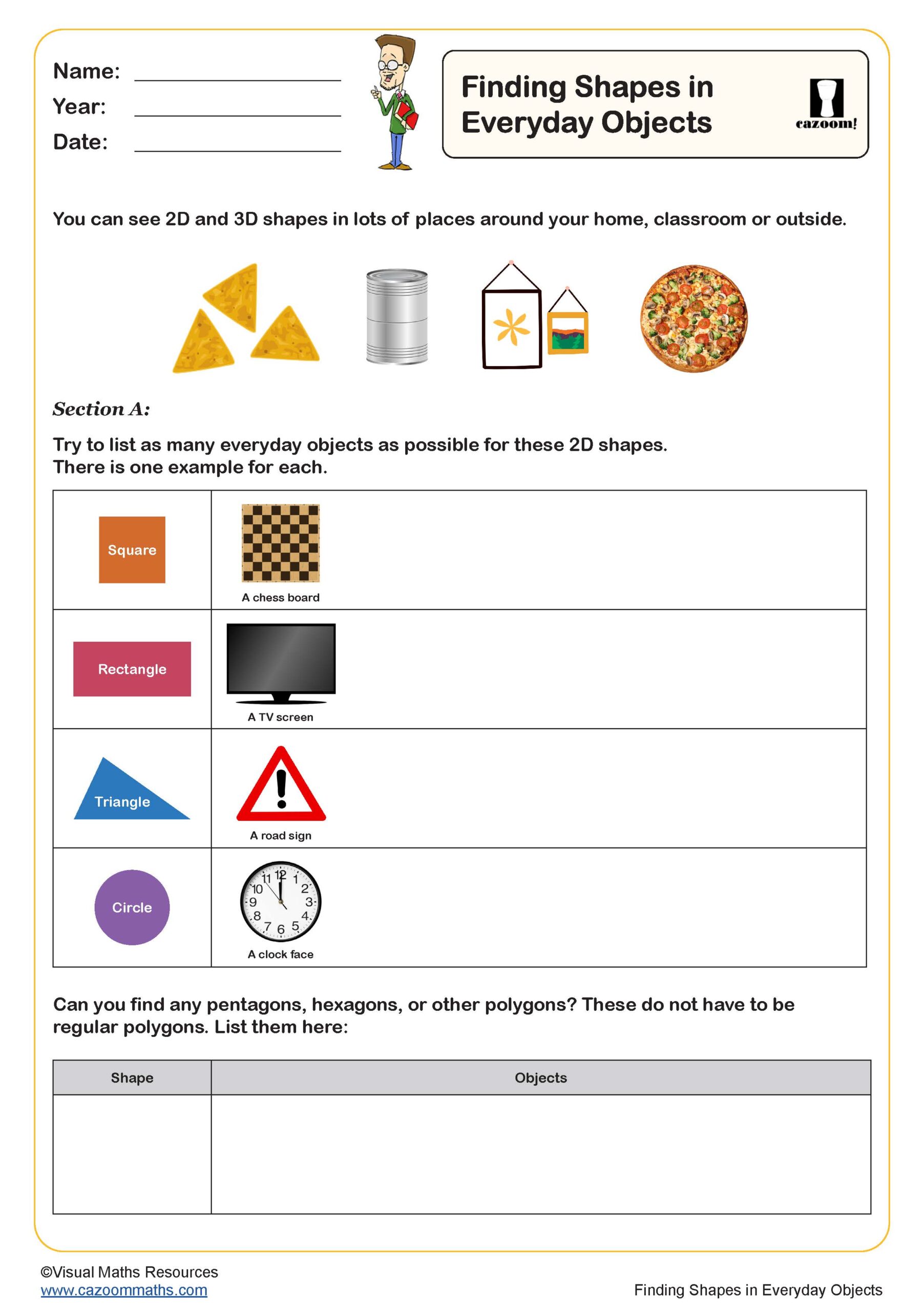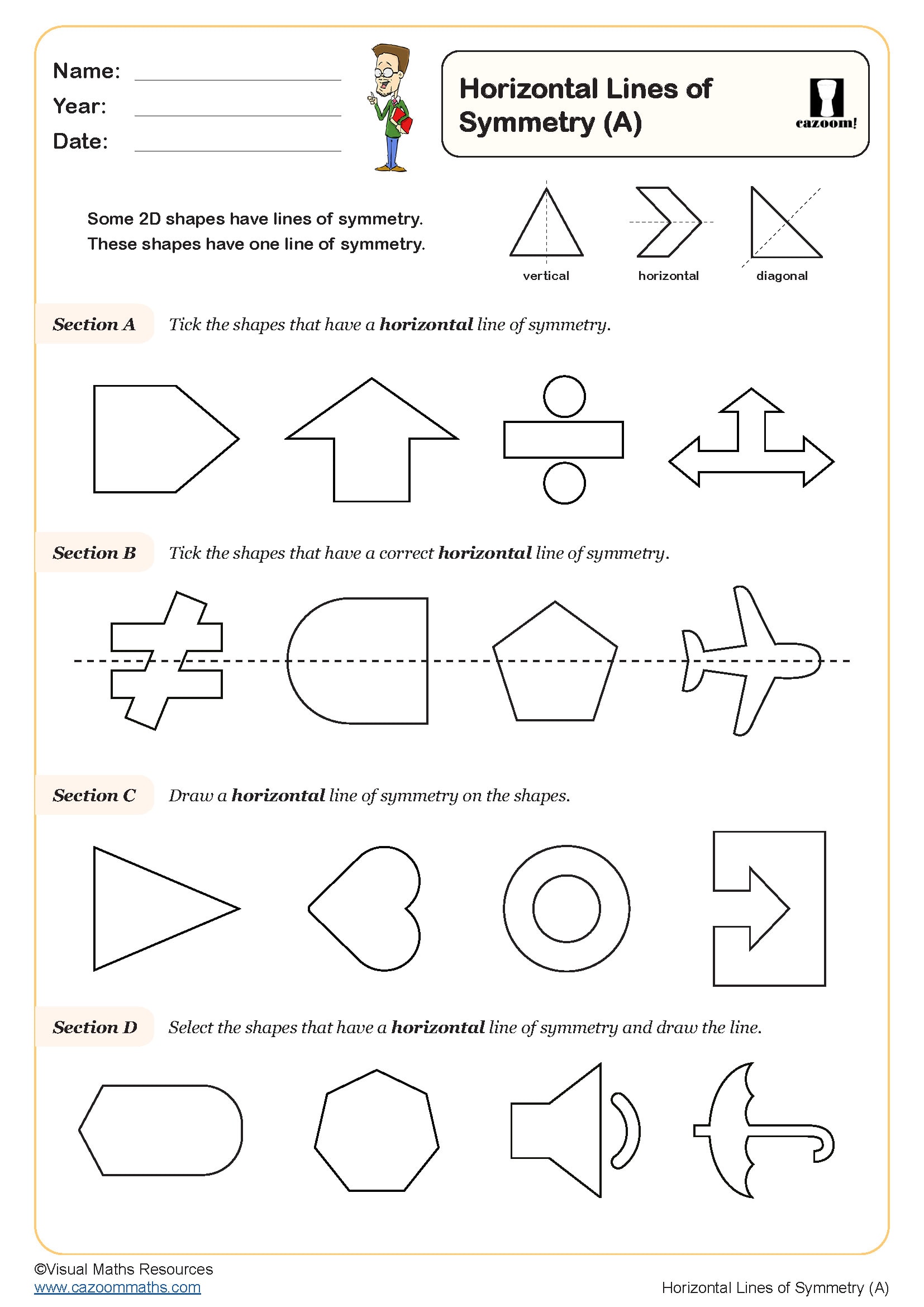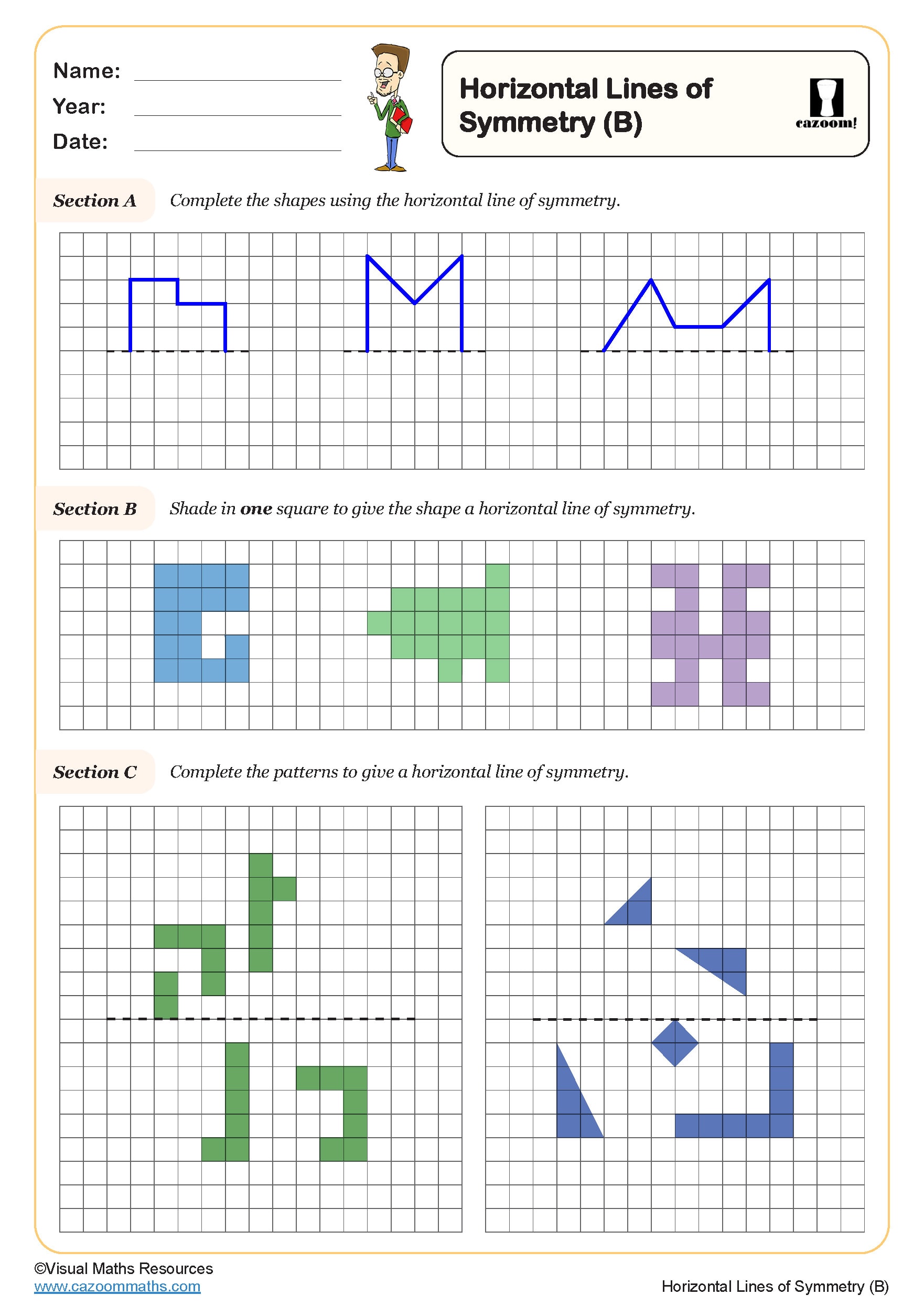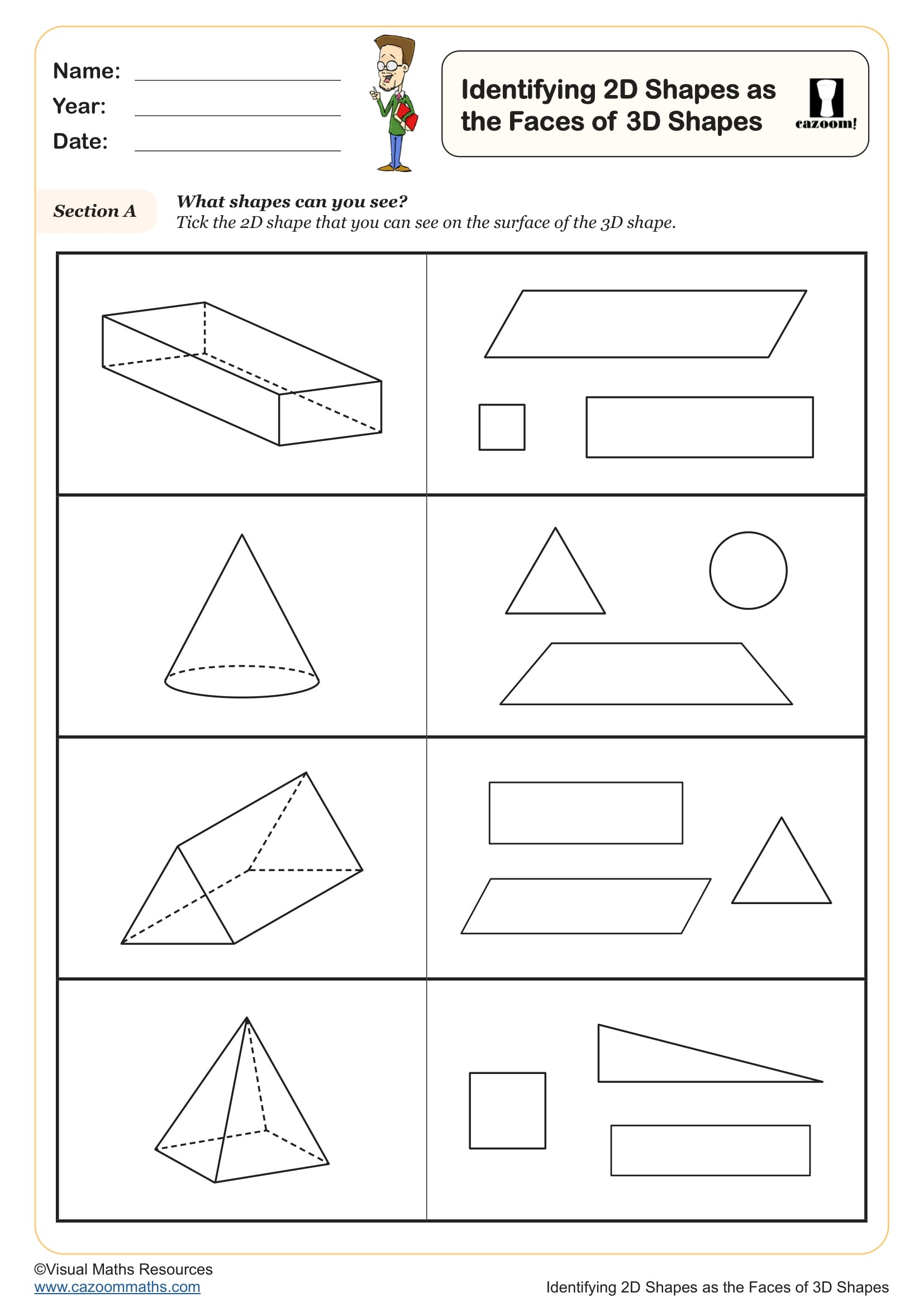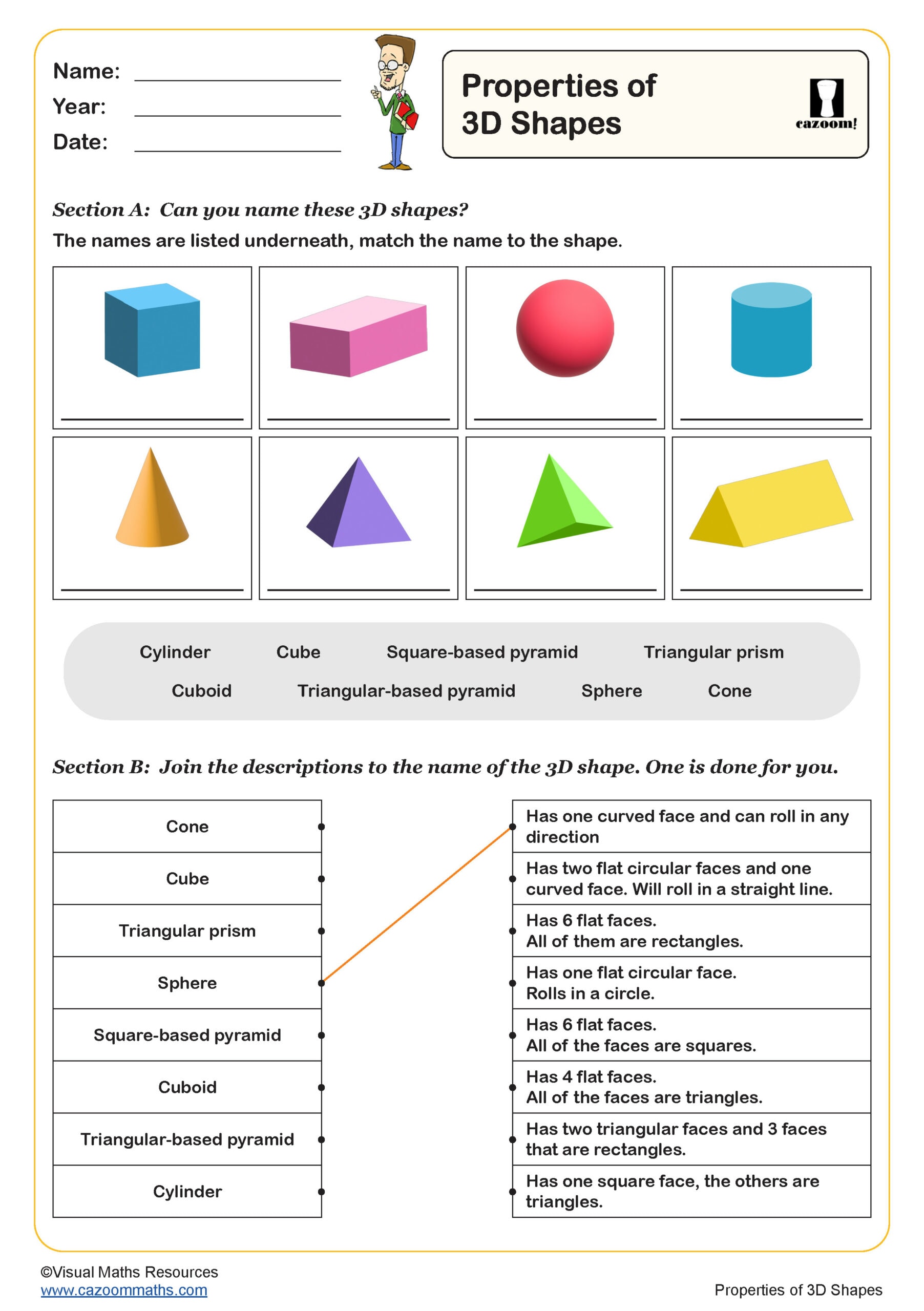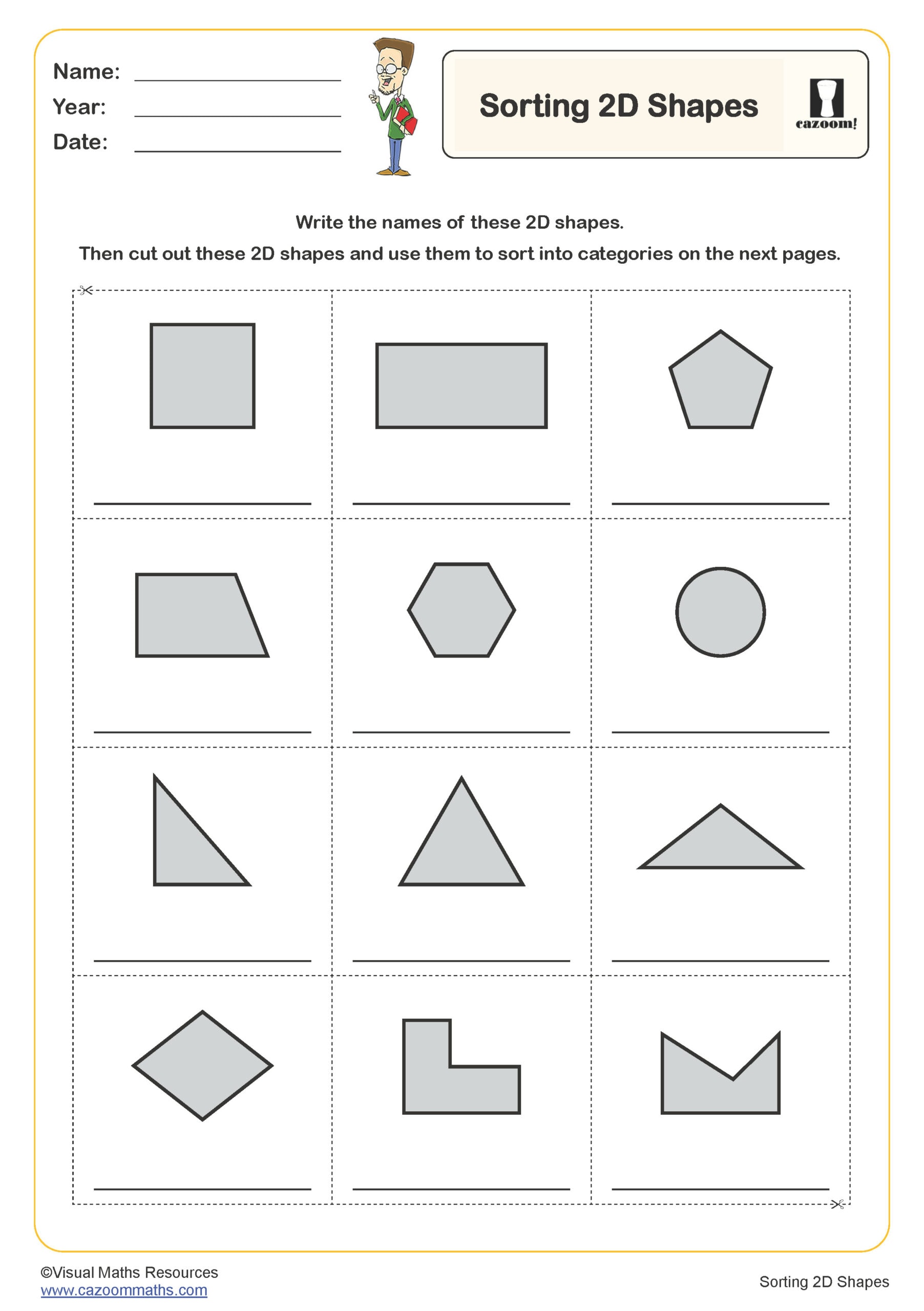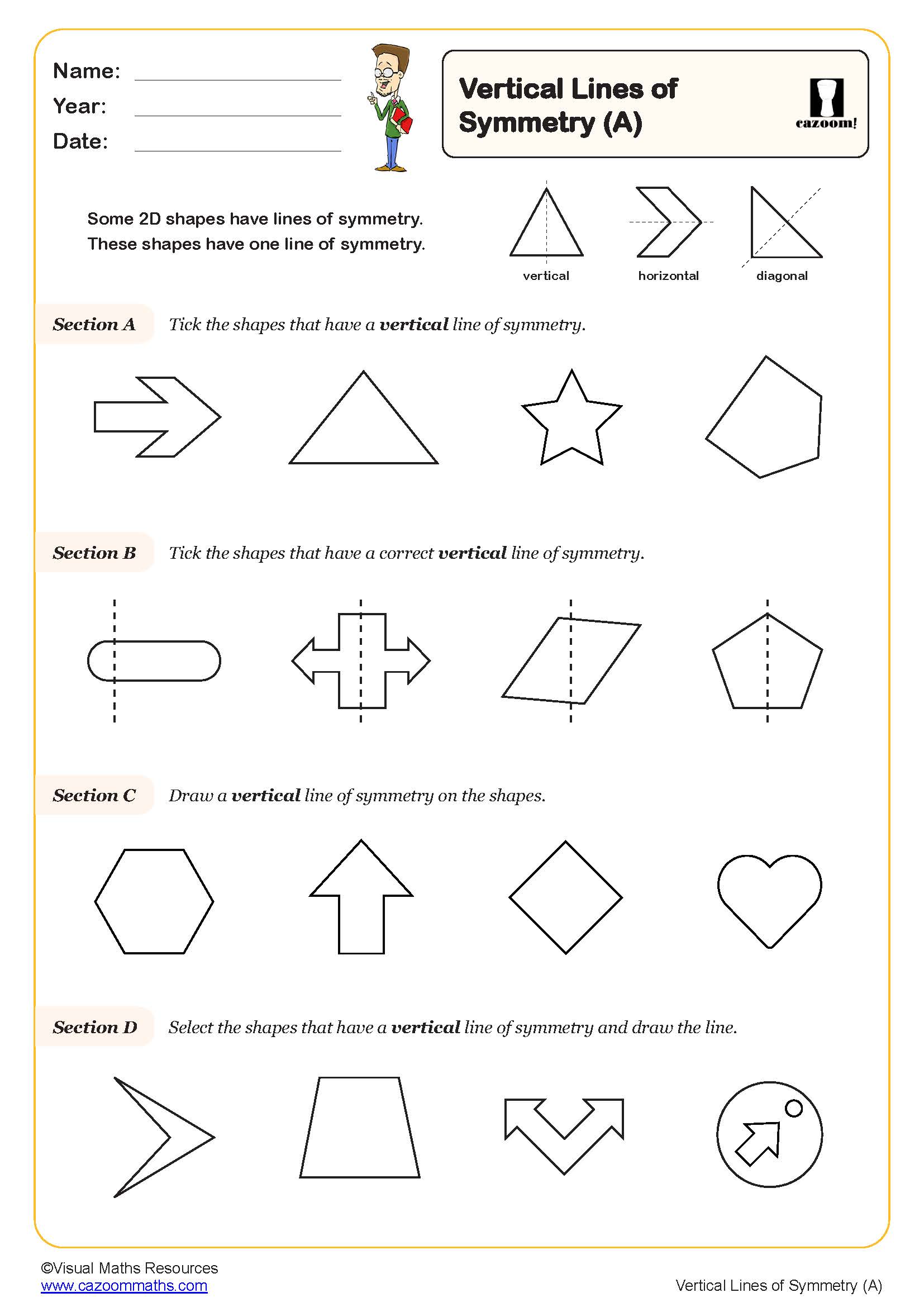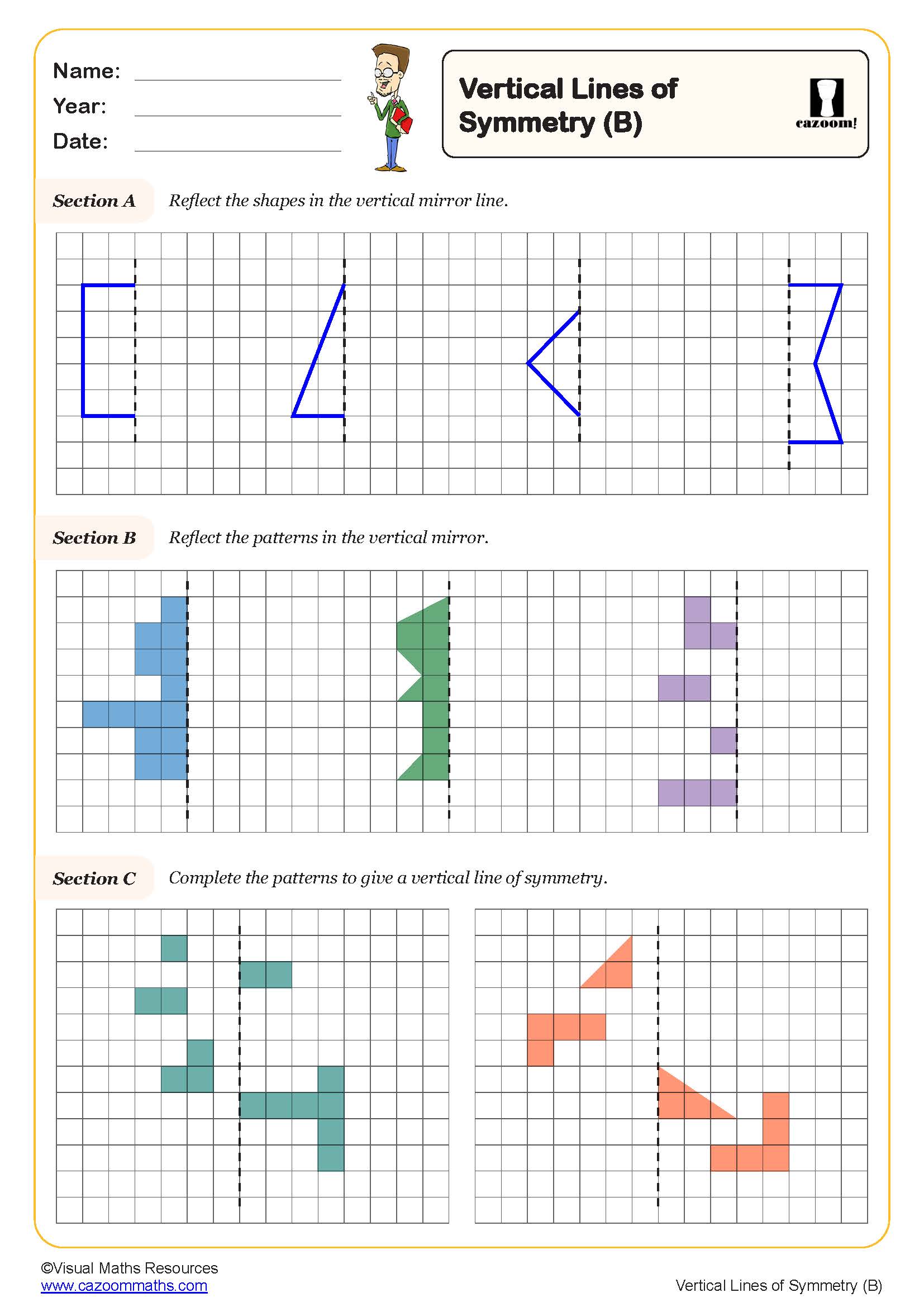Year 2 Properties of Shapes Worksheets
Year 2 Properties of Shapes Worksheets
Explaining what makes a triangle different from a square to a room full of six-year-olds can really be tricky. Here comes our geometry resources! Our maths team created these 2d shapes worksheets PDF resources after watching countless lessons where students needed that extra bit of scaffolding. These ready-to-print properties of shapes worksheets actually help children remember the difference between sides and corners. All of our worksheets include separate answer keys to initiate a hassle-free checking process.
Year 2 Properties of 2D Shapes Worksheet PDF Downloads with Detailed Solutions
To be honest, finding and selecting decent properties of 2d and 3d shapes worksheet PDF materials that aren't just basic colouring exercises takes forever. We've designed these Year 2 shapes worksheet activities to really challenge young mathematicians whilst keeping them engaged. Each 2D and 3D shapes worksheet with answers comes with step-by-step solutions that show exactly how we'd explain the thinking to a confused six-year-old (brilliant for teaching assistants too).
Why Year 2 Students Need Regular Practice of the Concept: Properties of Shapes
Teaching shapes for years has taught us this: children who master shape properties early become confident geometry students later on. It's not just about memorising facts – they're developing spatial reasoning that'll serve them well in secondary school. The vocabulary they learn now (vertices, edges, faces) becomes their mathematical toolkit for life. Regular practice makes these concepts stick.
Essential classroom benefits:
• Strengthens mathematical vocabulary and geometric understanding
• Builds visual discrimination and spatial reasoning abilities
• Develops analytical thinking and problem-solving confidence
• Creates solid foundations for advanced geometry topics
• Enhances mathematical communication and explanation skills
Everyday Situations Where Students Spot Shape Properties
The magic happens when students start seeing shapes and their unique properties everywhere they look! Once they grasp these concepts, the world becomes their geometry classroom. Walking around school suddenly becomes a mathematical adventure.
Shape hunting opportunities include:
• Playground equipment and sports facilities (climbing frames, courts, goals)
• Food packaging and containers (cereal boxes, pizza slices, • sandwiches)
• Household items and furniture (tables, picture frames, mirrors)
• Transport and vehicles (wheels, windows, license plates)
• Garden features and natural elements (flower beds, tree shapes, paving stones)
• Classroom displays and learning materials (books, whiteboards, posters)
